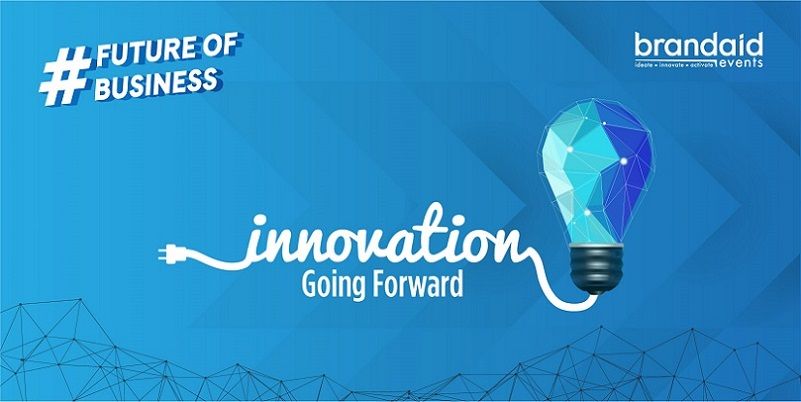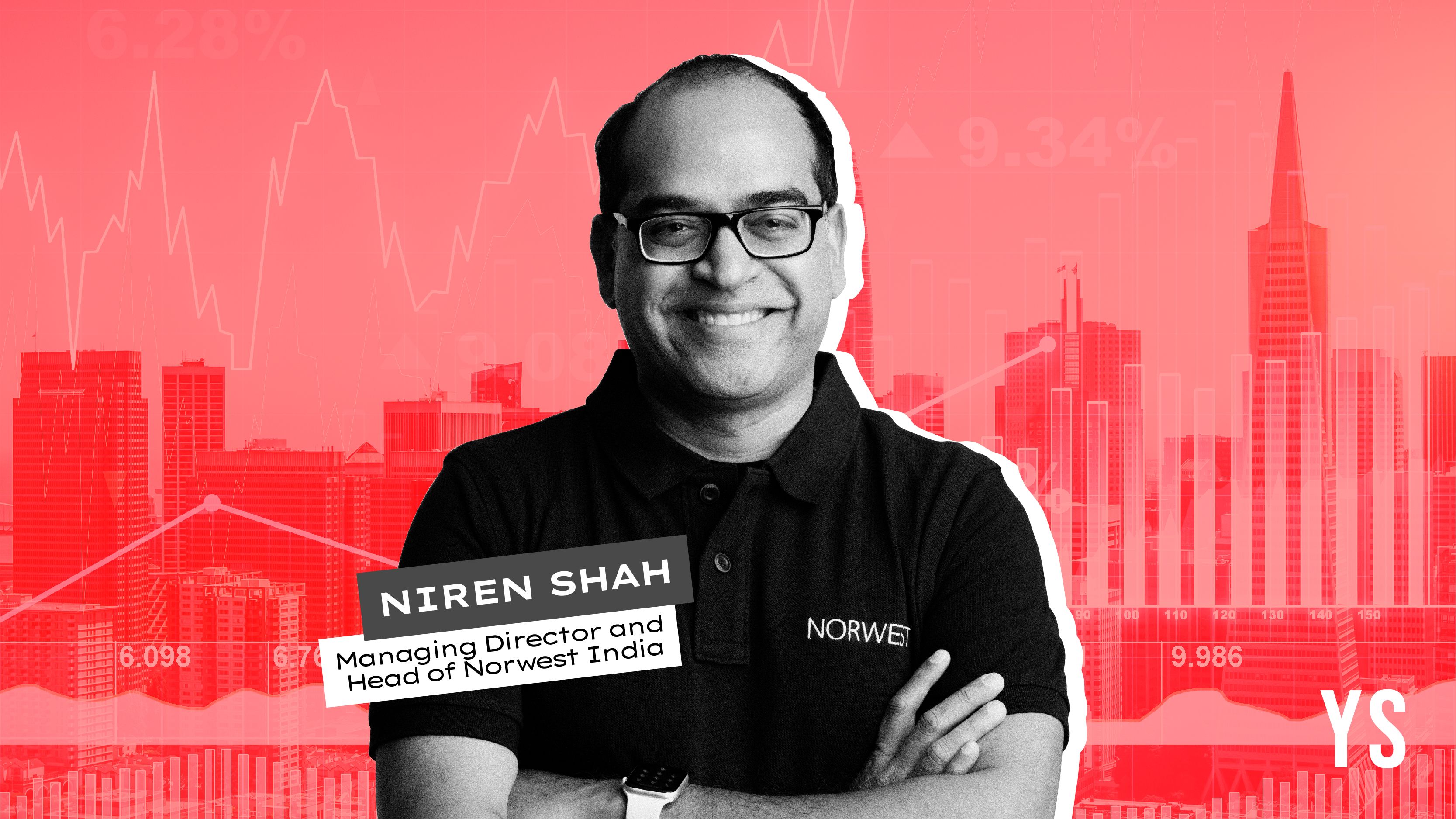Future of Business: Eight innovation factors for startups, corporates, and investors
In this panel discussion, three experts offer a range of insights on the future of open innovation, investor outlook for India, and innovation opportunities triggered by the COVID-19 crisis.
As part of its webinar series #BusinessPostLockdown, BrandAid Events recently organised a panel titled ‘Future of Business: Innovation Going Forward.’ The recording of the entire panel discussion has been made available online. Earlier sessions focused on retail, startups, and sports, and attracted up to 875 attendees.

The speaker lineup included Madhurima Agarwal, Director Engineering and Leader, NetApp Excellerator at NetApp; Lathika Pai, Country Head, Microsoft for Startups, MENA and SAARC; and Chinnu Senthilkumar, General Partner, Exfinity Venture Partners LLP.
The panel addressed how business after coronavirus lockdown is gradually moving from a focus on risk management to embracing new models of productivity and innovation as well. Larger issues of economic recovery, provisions for migrant workers, and global health governance have also surfaced in the broader context.
The panel discussion spanned the ‘3 Cs’ of innovation in the post-COVID era: creativity, co-creation, and community. Innovative thinking, collaborative practices, and a sense of social and environmental commitment are key success factors in the new normal.
As moderator of the panel, here are my eight key takeaways from the one-hour discussion. See also YourStory’s Startup Hatch section on the accelerator/incubator model of innovation, and extensive Book Review section with insights from over 250 titles on innovation and entrepreneurship.
1. Timing – when to innovate
Though many may question the wisdom of an entrepreneur trying to launch a startup or raise funds during the times of coronavirus – or the kick-off for a corporate innovation initiative – the evidence may show otherwise.
“Starting up is never easy and it’s never extremely difficult. Anytime is a good time to launch, when one feels that they are ready to start up. In fact, there are studies which say that startups that thrive through difficult times are the ones that are successful in the long run,” Madhurima explained. Testing oneself during tough times improves the odds of success.
“Having been an entrepreneur myself, four times around, picking oneself up from the ashes and rising is something that every entrepreneur needs to do, and that’s what I have personally done,” Lathika added.
“Anytime one is boxed into a corner, you kind of start thinking afresh about what you can do. That’s really about the whole entrepreneurial bent, about seeking opportunity in times of adversity,” she explained.
And from a corporate perspective, Lathika emphasised that now is the time for corporates to start looking at how to engage with innovation. “The only way to survive and get ahead is through technology and innovation,” she added. Engaging with startups helps in this regard, and together they can move faster in terms of their innovation plans.
During the ‘new normal,’ there are opportunities opening up for startups, Chinnu observed – in areas such as solutions for supply-chain management, telemedicine, cybersecurity, and work from home. His firm has already invested in a startup just a couple of weeks ago.
2. Corporate-startup engagement in action
The accelerator model of innovation has emerged as an effective way of co-creation between corporates and startups. It requires alignment of goals, solution propositions, and tech stacks.
Microsoft engages largely with B2B startups by helping them get enterprise-ready, scaling up in India and abroad, and connecting them to enterprise clients, Lathika explained. This includes co-selling; for example, a fintech startup has been connected to Indian and overseas banks.
NetApp works with B2B startups on three sides, Madhurima explained: product, customer, and investor. This includes making products scalable and enterprise-grade, with technical mentorship and community support.
Startups that can solve problems for NetApp and its clients are given sales support, she added, citing an Australia connect for one of the supported startups. NetApp also introduces promising startups to investors like Exfinity Ventures, and provides client experience assessments as well.
3. Success factors for corporate-startup engagement
Given the differences in cultures, mindsets, ambitions, and working styles between corporates and startups, a number of factors need to come into play for a successful collaboration.
In markets like the US, it is quite common for decision-makers in large firms to work with startups on innovation, Lathika explained. Trends to watch are that it is not just the CIO who is the tech decision-maker, but also others like the CMO or other CXOs.
This differs in other markets like India, where SaaS startups find it challenging to attract attention from corporates. The local firms feel such problems can be solved simply by throwing a few more bodies at it, unaware of the depth of domain knowledge and passion involved.
Company leaders must throw down their earlier baggage and appreciate the value that startups bring, Lathika urged. The focus should not be only on driving down costs either; this will drive startups to prefer engagement with US firms.
Indian corporates should not miss out on the contributions that Indian startups can make, she advised. “The mindset of the leadership has to change,” Lathika said; they should be willing to give startups a try.
Making the engagement between corporates and startups a frictionless experience is key, Madhurima added. Innovation programmes act as a bridge between the two, and call for experience, empathy, and expectation-setting.
Corporate involvement helps startups with talent and cashflow issues, and navigate the corridors of power. It enables big picture perspectives, and moving beyond daily firefighting, she explained.
4. Evolution of the corporate accelerator model
Traditional corporate accelerators have been based on the cohort model, culminating in demo days and investor pitches. But this model is evolving. “Our model is called Microsoft for Startups, and is based in 10 locations around the world,” Lathika explained.
The company works with Series-A funded startups, via bespoke engagement; this extends beyond evangelisation to actual business propositions. It leverages Microsoft technology, where relevant, and helps co-sell the innovation opportunity to enterprise customers.
“The growth of the startup is closely linked to our business, and so it’s not a question of completing a four-month programme and leaving,” Lathika clarified. There has been deep engagement with hundreds of startups over the long term, with extensive support from a wide range of corporate experts.
NetApp is transitioning from the cohort model to a rolling-sourcing one, Madhurima explained. But its cohort model also involves engagement beyond the four-month ‘courtship’ period. The discovery phase with deep dives can lead to a proof of concept and matchmaking with clients. Over the years, the maturity of selected startups and the sales angles have improved, she added.
NetApp’s focus is on fostering innovation in the ecosystem while also aligning with its own business. Target areas include hybrid cloud, automation, machine learning, artificial intelligence, and IoT.
5. Investment landscape in India
The rise of corporate accelerators has made it easier for investors to find deals, Chinnu explained. They address domains ranging from ecommerce to cybersecurity. Some MNCs have set up accelerators in a number of countries around the world.
“That’s a ready-made source for me to find deals. If I have to invest, I don’t need to go too far and search for deals, actually,” he added; most of his investments target the US-India corridor.
Accelerators help VCs via curation and corporate customer testimonials from CXOs. Chinnu advises startups to partner with corporates to help shorten GTM routes and periods. This will help investors further down the road with their exit strategies based on roadmaps.
He also advises Indian firms to launch their own corporate venture funds and startup accelerators; many US and European corporates have already mastered the game. Indian cities like Bengaluru and Hyderabad have a wide range of accelerators.
Over the years, Chinnu has observed a number of phases of investment in India: PE funds (infrastructure), B2C startups, and now B2B ventures. “In fact, we are the first fund to start in India that is completely B2B focused,” he said; his company has invested in 23 startups.
He feels there is deep enterprise tech talent in India, and market understanding and access are now improving. There is a large potential for Indian B2B startups overseas. “We put a lot of premium on IP because we are very IP driven,” Chinnu said. His portfolio startups have filed more than 150 patents.
IP contributes to market value and commands premium at times of exit. “In the B2B segment, we look at a lot of entrepreneurs with PhDs, and domain experience of 10 to 15 years,” Chinnu explained.
6. The future of open innovation
The open innovation model spans a range of activities such as crowdsourcing, hackathons, competitions, and prizes. It has been embraced by corporates, universities, and investors as well. (See my framework of 15 innovation tips: how large corporations can successfully engage with startups.)
“The world is moving more towards open innovation as compared to 20 years back,” Chinnu observed. It helps corporates quickly find solutions, talent and new perspectives from outside – at scale. “It’s a good way to strengthen our ecosystem in India,” he added.
He urged startups to keep their eyes and ears open for collaborative innovation opportunities. As examples, he cited Bosch’s sponsorship of 15 fellowships in IIT-Madras, in domains like autonomous vehicles.
NetApp engages with startups through a number of events, many of which have now moved online, Madhurima explained. “Open innovation is the future of innovation. Not everybody can do all the innovation themselves, and partnership helps in this regard,” she added.
NetApp engages with IISc and the IITs, many of whom have entrepreneurship development cells and tech-fests. “Universities are where the minds of the future get shaped,” she emphasised.
Healthcare is a top-of-mind concern for many governments, and NetApp is connecting them to its startups in this sector. Madhurima also cited NASSCOM, TiE Bangalore, and YourStory as great platforms for growing India’s startup ecosystem.
Microsoft conducts a range of hackathons around the year, and Microsoft Garage conducts several workshops and courses for entrepreneurs, Lathika described. The Imagine Cup, held every year, introduces innovation to engineers, developers, and students.
“It’s really fascinating how people are now coming together to exchange ideas and really leverage the work that’s being done globally,” Lathika said. She sees more international collaboration happening, and more “techie purists” will have the satisfaction of their code being used by millions.
Microsoft is also collaborating with India’s state and central governments, for initiatives such as Highway to a Hundred Unicorns and Emerge X competition in Tier-II cities. Many states are realising that startups are going to be the workforce of the future, Lathika explained. She engages with 15 countries for government-supported startup cultivation initiatives.
Many corporates are also discussing how they can combine forces in supporting startups. For example, Microsoft’s 100x100x100 programme calls for bringing together 100 committed companies and 100 startups with enterprise-ready solutions. Each firm will commit to spend $100,000 over a course of 18 months on the SaaS startups’ solutions.
7. Innovation opportunities triggered by the COVID-19 crisis
The coronavirus pandemic has had dealt a body blow in terms of loss of human life and economic productivity. But it has also spurred a wave of innovation in digital workflows, virtual gaming, and online education.
Design firms are tapping the opportunity for safe distancing solutions in restaurants, retail, offices, and travel, in addition to making masks and ventilators. (See YourStory’s writeup on DesignUp’s Future of Travel webinar.)
Chinnu listed other opportunities in the pandemic era: cybersecurity solutions, WFH tools, telemedicine, 3D printing, alternative fuel cells, drone policing, data analytics, and even disinfection ovens (‘corona oven,’ used by clients like police departments).
“It is definitely going to be a new normal. Look for trends, there are a lot of megatrends coming along these lines in the post-lockdown phase,” Chinnu summed up.
Some startups in online education have witnessed a 600 percent increase in the number of students using their platforms, Lathika observed. There is also the rise of gaming in the education sector, not just social gaming. Many school children are coming up with innovative and practical ideas as well.
A number of agile startups have pivoted to offer products and services tackling pandemic concerns, Lathika added. Some solutions for the travel industry, for example, can be tweaked for other sectors.
Madhurima divided the opportunities during this crisis into three phases: work from home, back to office, and then back to business as usual. “Each of these different phases will have new opportunities,” she said, citing chatbots, workflow re-design, and supply-chain solutions as examples.

8. The future of informal knowledge networks
One activity that has taken a beating during the pandemic is events for networking and knowledge exchange for startups, as well as informal serendipitous exchanges at “water cooler” settings in corporates.
Chinnu predicted that these kinds of events will take a while to come back, but virtual webinars and conferences will become more popular. Calls and pitches will happen online, and many will continue even after things return to relative normal.
“Today, we are blessed with technology with which we can actually talk to each other, and it doesn’t matter where we are,” Lathika observed. “Imagine if this pandemic had struck 20 years ago when we didn’t have all this – the whole world would have fallen apart,” she remarked.
Though people will miss socialising, there are free tools available for online networking. Entrepreneurs can connect with investors in the Valley or others in Latin America or Ukraine without the cost, time, effort and risk of air travel, Lathika explained.
“I believe in the resiliency of the human spirit,” Madhurima affirmed. Security checks in public places were unthinkable until terrorist attacks happened, but are an accepted norm now. The pandemic has just reset norms about hygiene, safety, and distancing to a new level.
“Technology has enabled us to do whatever we wanted. It is being deployed very creatively by people,” she added. People are saving costs on commuting, and there is actually more overall time to call one another for professional and personal reasons.
“So in some ways, while the way we interacted informally might have changed, it can still happen – it’s just taking a different shape. I think by the time we come out of this, we would have it all figured out, we are all for innovation in all aspects of life,” Madhurima summed up.
“It’s important to embrace the new normal quickly. Think disruptive, and build a proof of concept. Improvise, implement and repeat – all at lightning speed. Unlearn, reorganise, relearn, and strike new partnerships,” advised Vipul Mathur, Director, BrandAid Events, in a chat after the event.
Edited by Teja Lele














